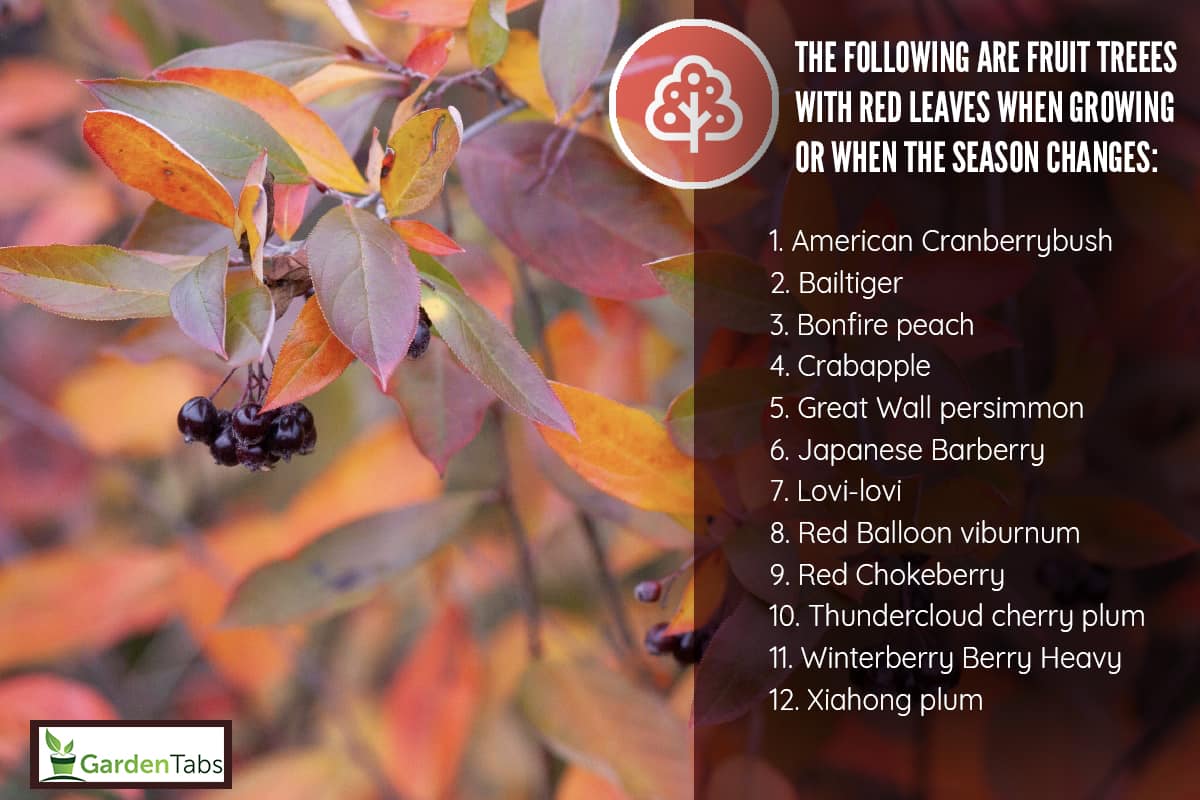While red fruits are prevalent, some fruit trees possess the same vibrancy and boldness in their foliage. Are you wondering what those varieties are? To help you, we researched which fruit trees have red leaves. Here's what we found.
If you want a striking shade in your landscape, raise one or two of these fruit trees with red leaves when growing or when the season changes:
- American Cranberrybush
- Bailtiger
- Bonfire peach
- Crabapple
- Great Wall persimmon
- Japanese Barberry
- Lovi-lovi
- Red Balloon viburnum
- Red Chokeberry
- Thundercloud cherry plum
- Winterberry Berry Heavy
- Xiahong plum
In this post, we have a detailed discussion of red fruit trees. We'll also explore the selection of red produce and shrubs as alternative or companion plants and other related questions. So keep on reading to learn more.
Which Fruit Trees Have Red Leaves?
Below are the primary characteristics and care guides of fruit trees with red leaves and where they can thrive.
1. American Cranberrybush (Viburnum opulus)
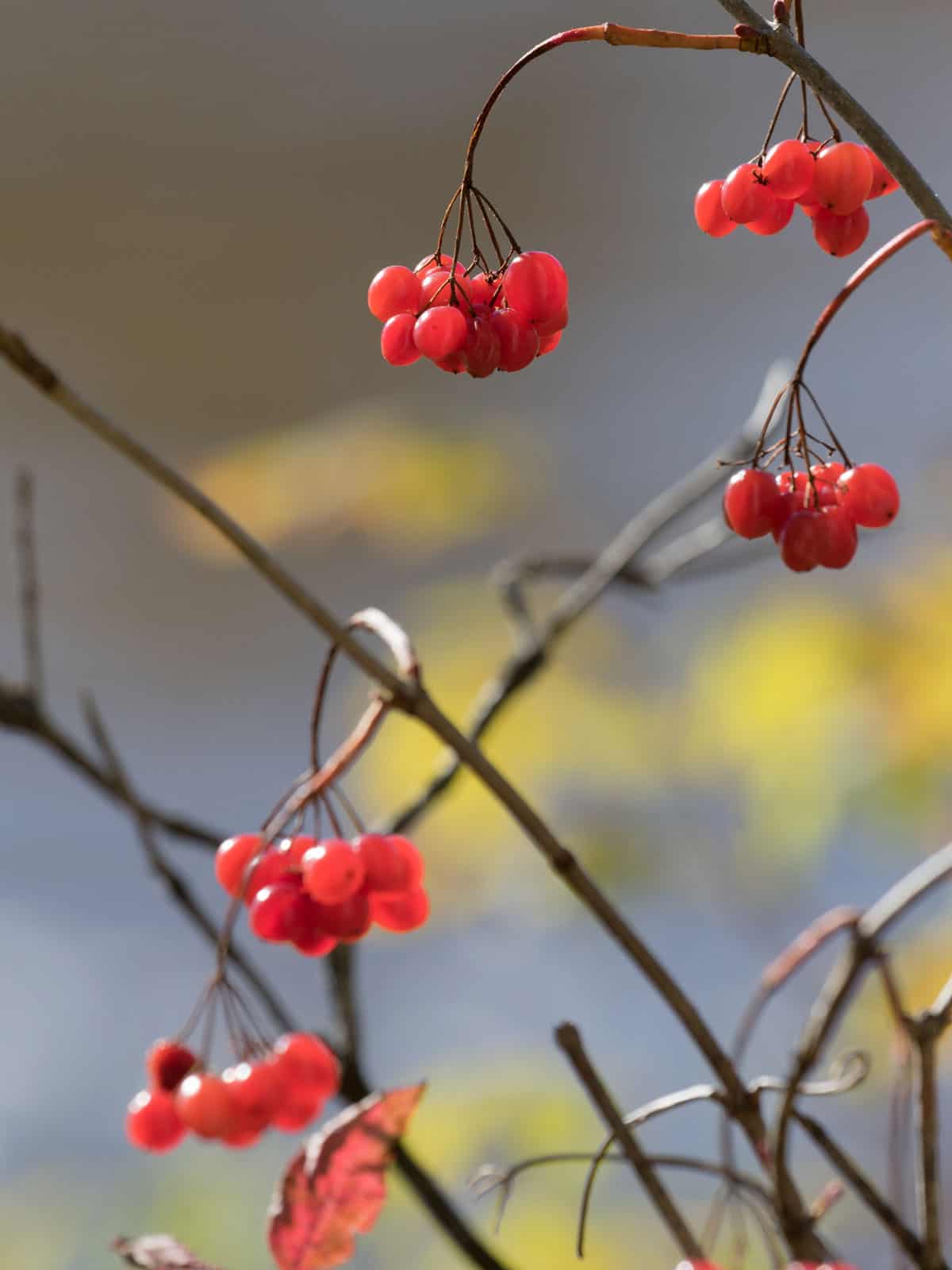
The upright Redwing cultivar of cranberry has green foliage that changes into red during autumn. You can use it as stand-alone or as a hedge. Aside from the structural function, its tasty fruits are perfect for jam-making and preservation.
- Height and Spread: 8 to 10 feet high; 6 to 8 feet wide
- Foliage Cycle: deciduous
- Bearing Period: August to September
- Soil Condition: well-drained clay or loam; flexible pH level
- Spacing: 72 to 96 inches
- Light Exposure: full sun to part shade
- Water Needs: average
- USDA Hardiness Zones: 2 to 7

Click here to see this pack of cranberry seeds on Amazon.
2. Bailtiger (Rhus typhina Tiger Eyes)

This non-aggressive shrub has striking scarlet leaves, dark red berries, and purplish wood parts in the fall. It is low maintenance because of its high tolerance for drought and insect problems.
- Height and Spread: 3 to 6 feet high and wide
- Foliage Cycle: deciduous
- Bearing Period: fall
- Soil Condition: flexible pH and soil type
- Spacing: 36 to 72 inches
- Light Exposure: full to partial sun
- Water Needs: average
- USDA Hardiness Zones: 5 to 8
3. Bonfire Peach

These purple leaf peach shrubs have pink flowers, attracting butterflies and birds. They are widespread in Alabama, Connecticut, and Delaware.
Grow them through a budding method, whether in the ground or container. Although they are small, they require high maintenance.
- Height and Spread: 4 to 6 feet tall and 6 to 8 feet wide
- Foliage Cycle: deciduous
- Bearing Period: mid-spring
- Soil Condition: mildly acidic
- Spacing: 8 to 9 feet
- Light Exposure: full sun
- Water Needs: average
- USDA Hardiness Zones: 5 to 9
4. Crabapple (Malus Hybrida)
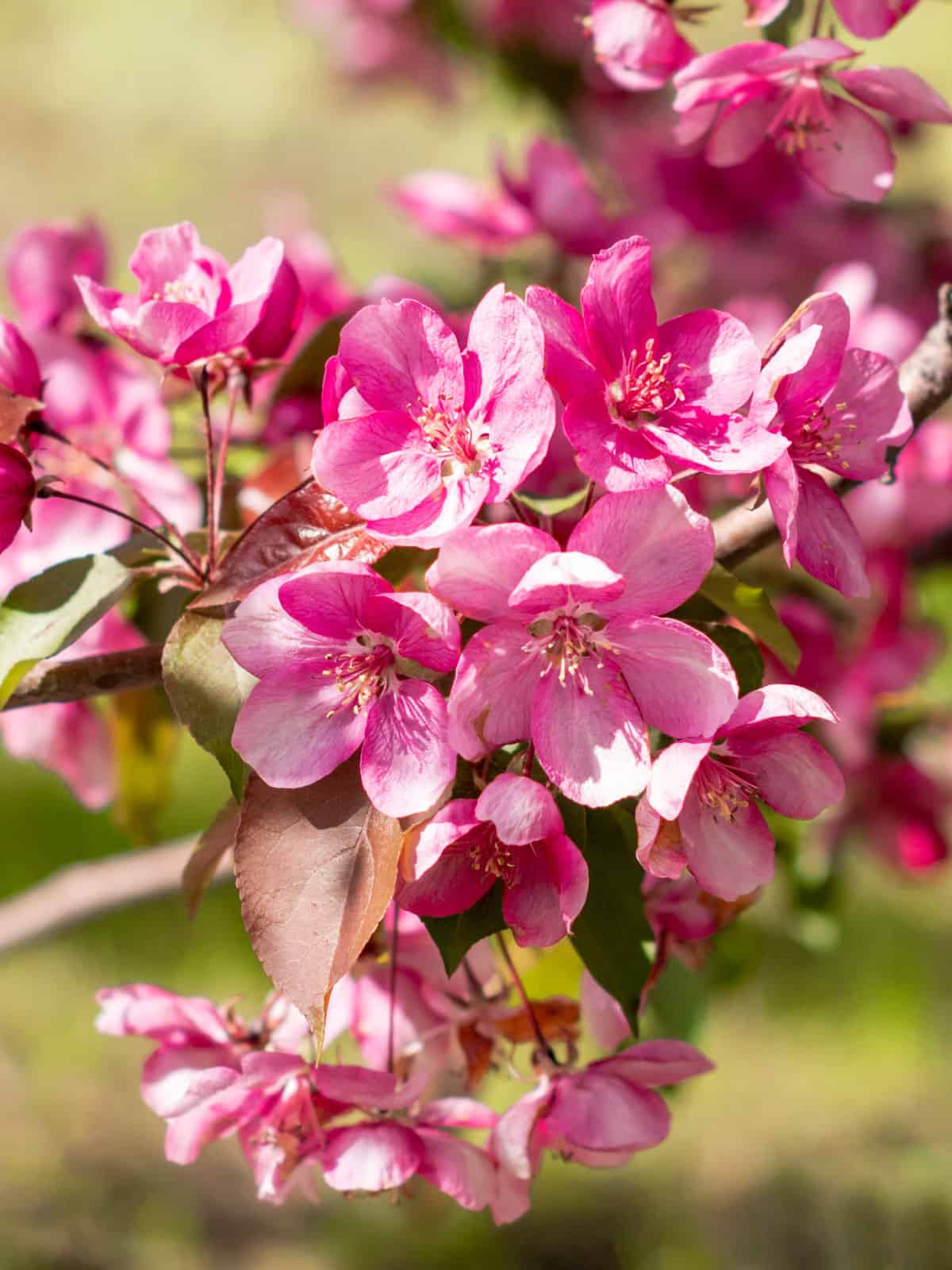
The flowering crabapple has white to red blossoms and purple leaves. Create an accent in your landscape with this classic tree.
- Height and Spread: 12 to 15 feet high and wide
- Foliage Cycle: deciduous
- Bearing Period: summer
- Soil Condition: fertile and well-draining; loamy, clay, or sand; mild pH
- Light Exposure: full sunlight
- USDA Hardiness Zones: 5 to 8
5. Great Wall Persimmon (Diospyrus kaki)
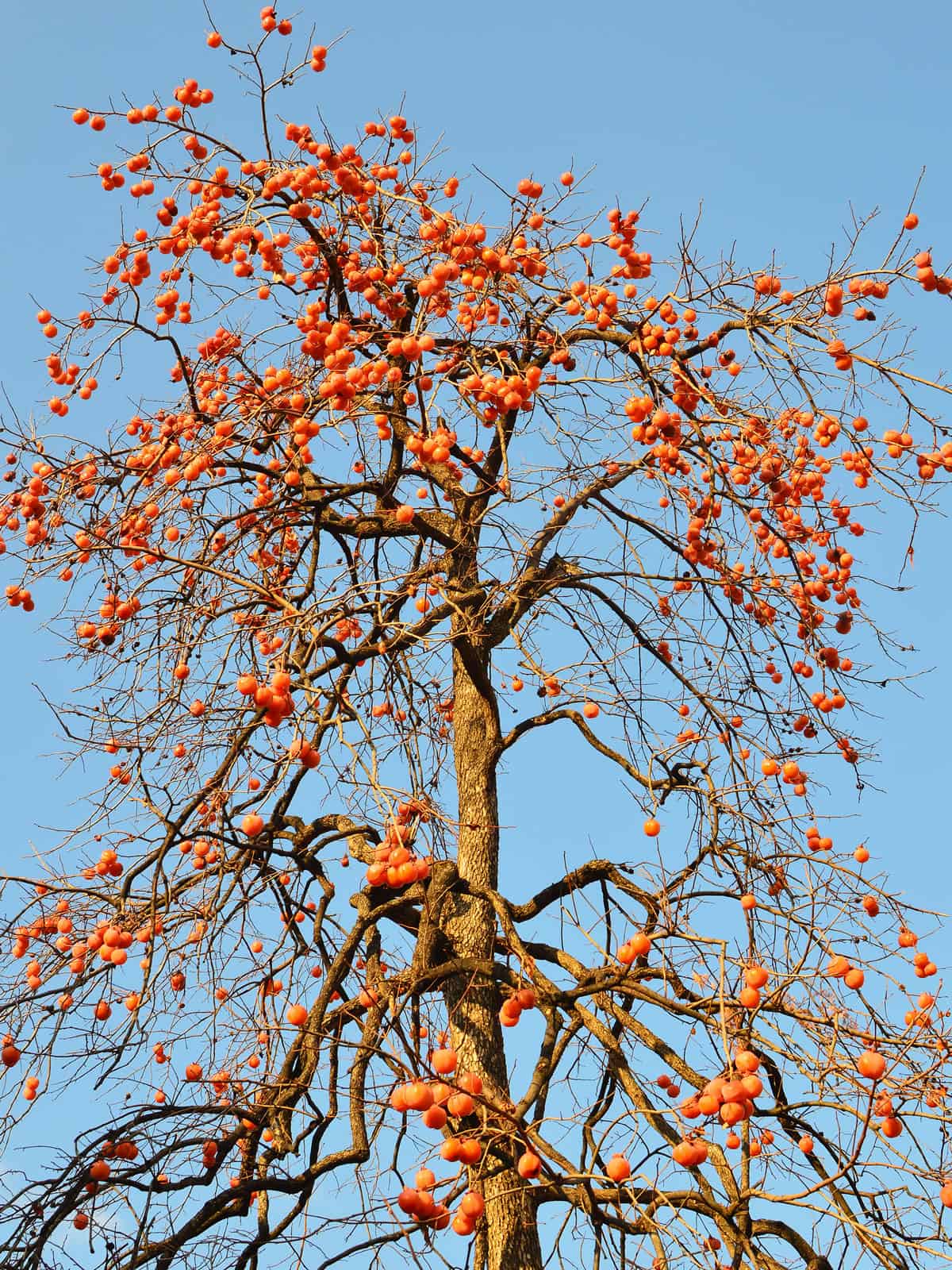
Another tree with red fall foliage is this medium-size persimmon, native to China. Hence, the name of this variant.
- Height and Spread: 15 to 20 feet high and wide
- Foliage Cycle: deciduous
- Bearing Period: September to October
- Soil Condition: fertile and well-draining
- Light Exposure: full sun
- Water Needs: deep-watering
- USDA Hardiness Zones: 6 to 9
6. Japanese Barberry (Berberis thunbergii)
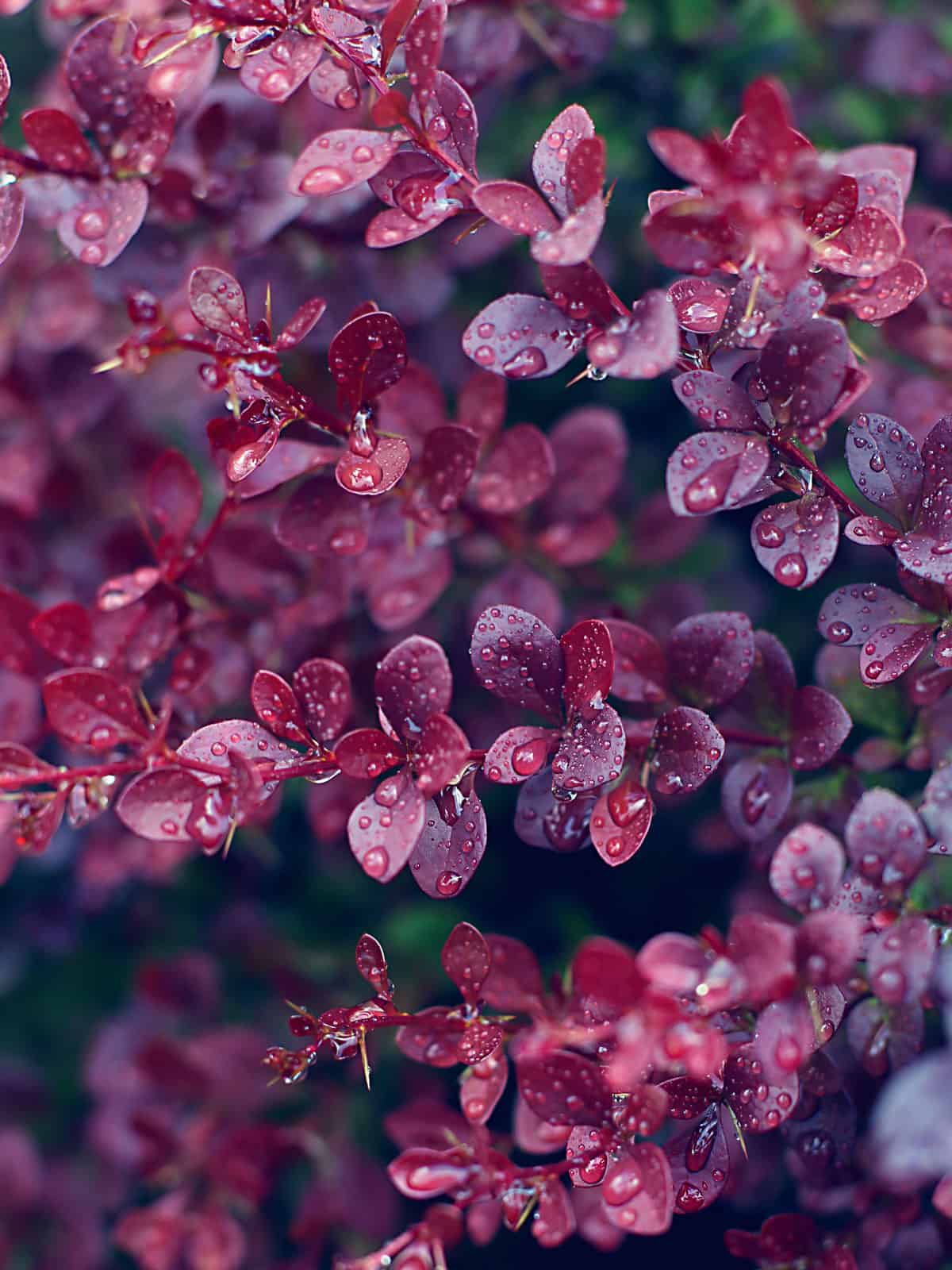
Although this plant is a dwarf, it is still eye-catching. This is because of its red oblong leaves, tiny yet showy fruits, and yellow flowers.
- Height and Spread: 1 to 2 feet high and 2 to 3 feet wide
- Foliage Cycle: deciduous
- Bearing Period: fall
- Soil Condition: flexible pH and soil type
- Spacing: 24 to 36 inches
- Light Exposure: full to partial sun
- Water Needs: low
- USDA Hardiness Zones: 4 to 8
7. Lovi-lovi (Flacourtia inermis Roxb.)
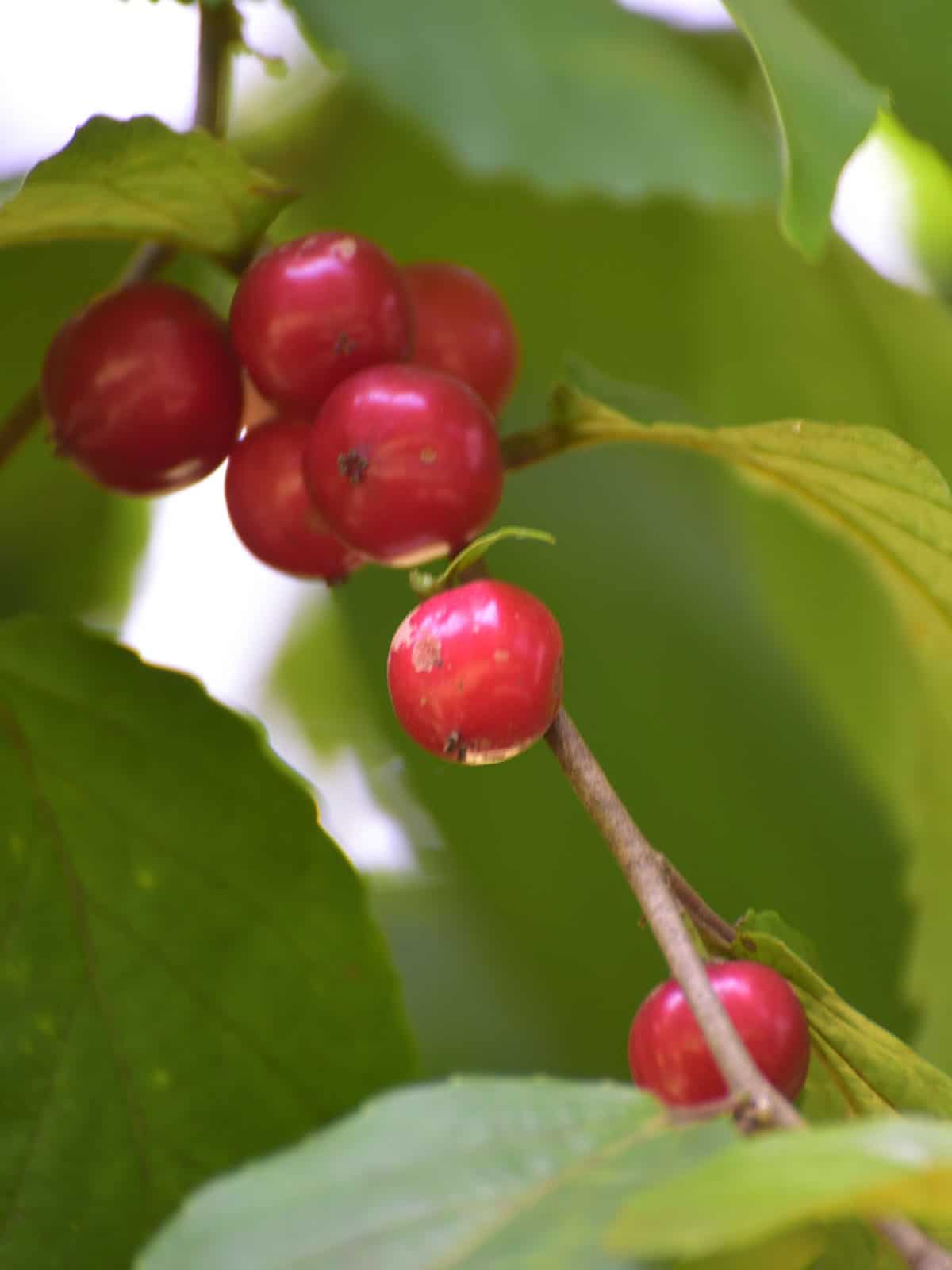
The Batoko plum or Lovi-lovi is an autotrophic tree, meaning it can produce its food from the carbon dioxide in its surroundings. It has orange-red leaves during younger years.
Seed, grafting, and air-layering are the best propagation methods for this tree. It bears bountiful fruits in clusters despite its moderate growth rate.
- Height and Spread: up to 50 feet
- Foliage Cycle: evergreen
- Bearing Period: year-round in tropical regions
- Soil Condition: moist loam
- Light Exposure: full sun
- Water Needs: average
- USDA Hardiness Zone: 10
8. Red Balloon (Viburnum x rhytidophylloides)
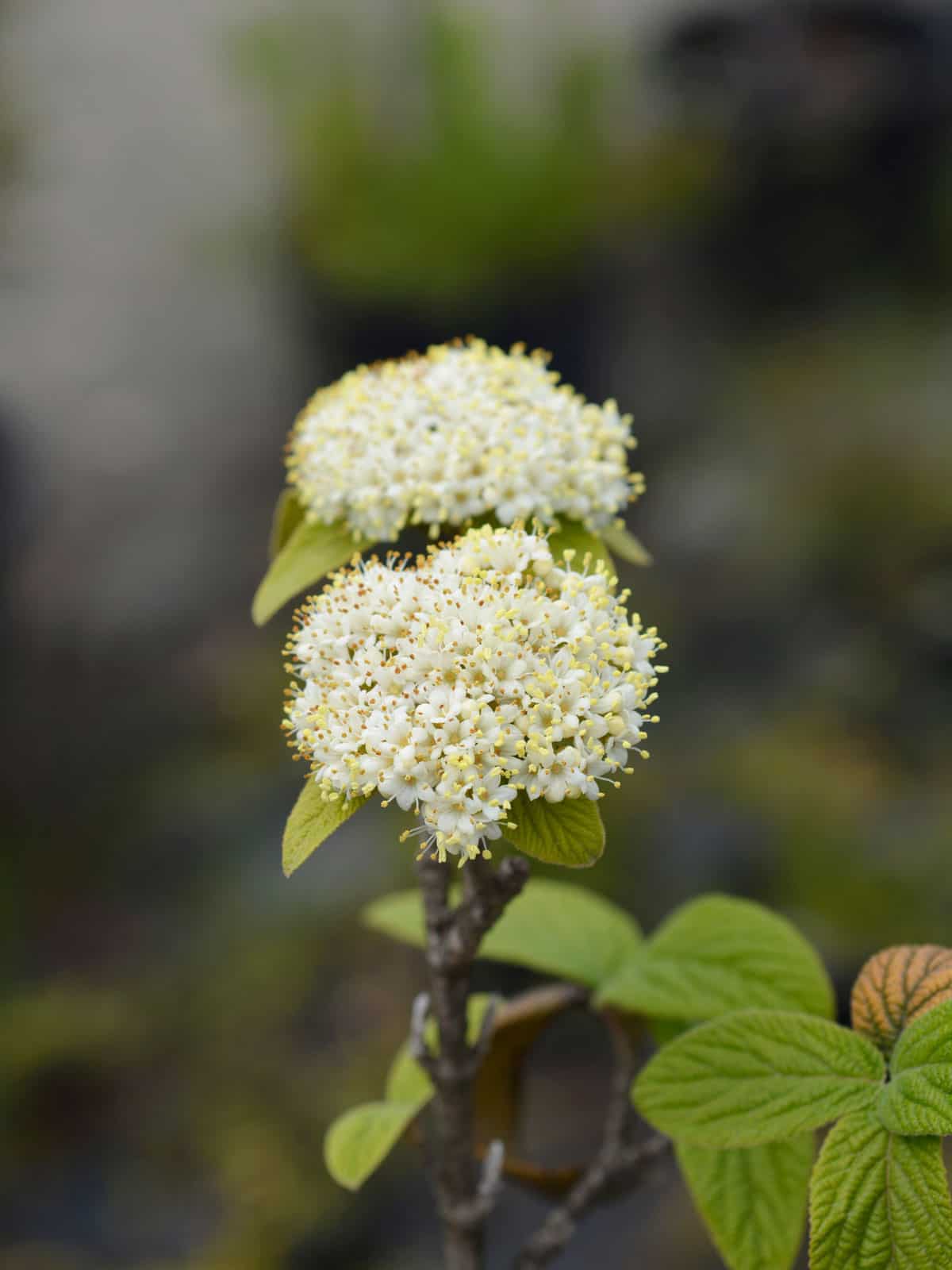
While the Red Balloon resists deer, rabbits, and heat, it attracts insects and birds. It has green foliage that changes into the red during cold temperatures.
- Height and Spread: 6 to 8 feet high and wide
- Foliage Cycle: deciduous
- Bearing Period: spring
- Soil Condition: acidic to neutral; moist loam or sand
- Spacing: 96 to 120 inches
- Light Exposure: full to part sun
- Water Needs: average
- USDA Hardiness Zones: 4 to 8
9. Red Chokeberry (Aronia arbutifolia)
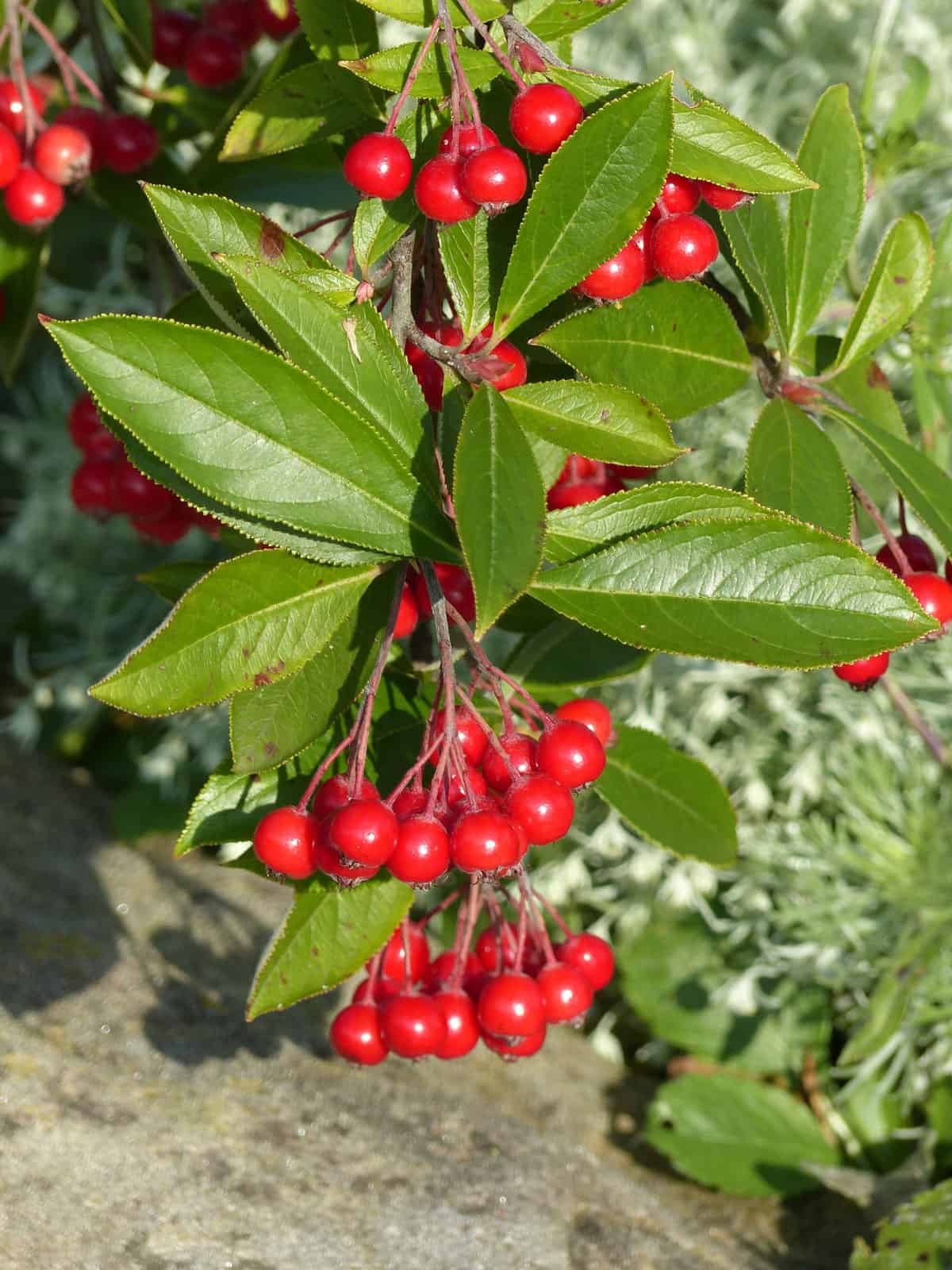
Even though chokeberry endures wet and dry soil, watch out for the colonial spread.
- Height and Spread: 6 to 10 feet high and 3 to 5 feet wide
- Foliage Cycle: deciduous
- Bearing Period: summer
- Soil Condition: acidic to neutral; loam or clay
- Spacing: 36 to 60 inches
- Light Exposure: full to part sun
- Water Needs: average
- USDA Hardiness Zones: 4 to 9
10. Thundercloud Cherry (Prunus cerasifera ‘Atropurpurea’)
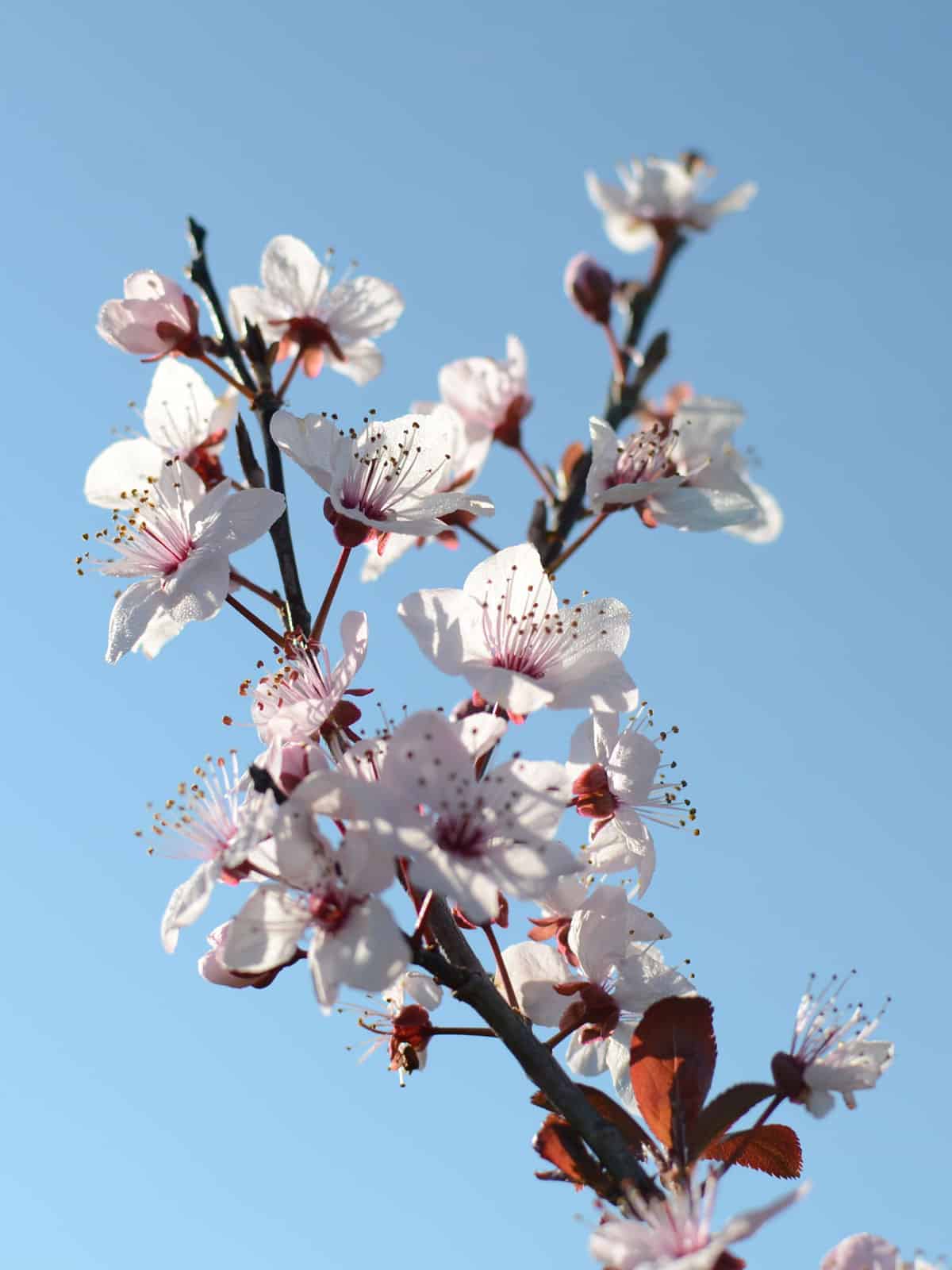
The Thundercloud plum brings high contrast with its dark ruby foliage and pinkish-white flowers in springtime. Opt for chip buddings or softwood cuttings so they will flourish quickly.
This tree calls for high maintenance because it is vulnerable to insect infestation and diseases.
- Height and Spread: 15 to 20 feet high and wide
- Foliage Cycle: deciduous
- Bearing Period: fall
- Soil Condition: flexible pH and soil type
- Light Exposure: full to partial sun
- USDA Hardiness Zones: 5 to 8
11. Winterberry Berry (Ilex verticillata)
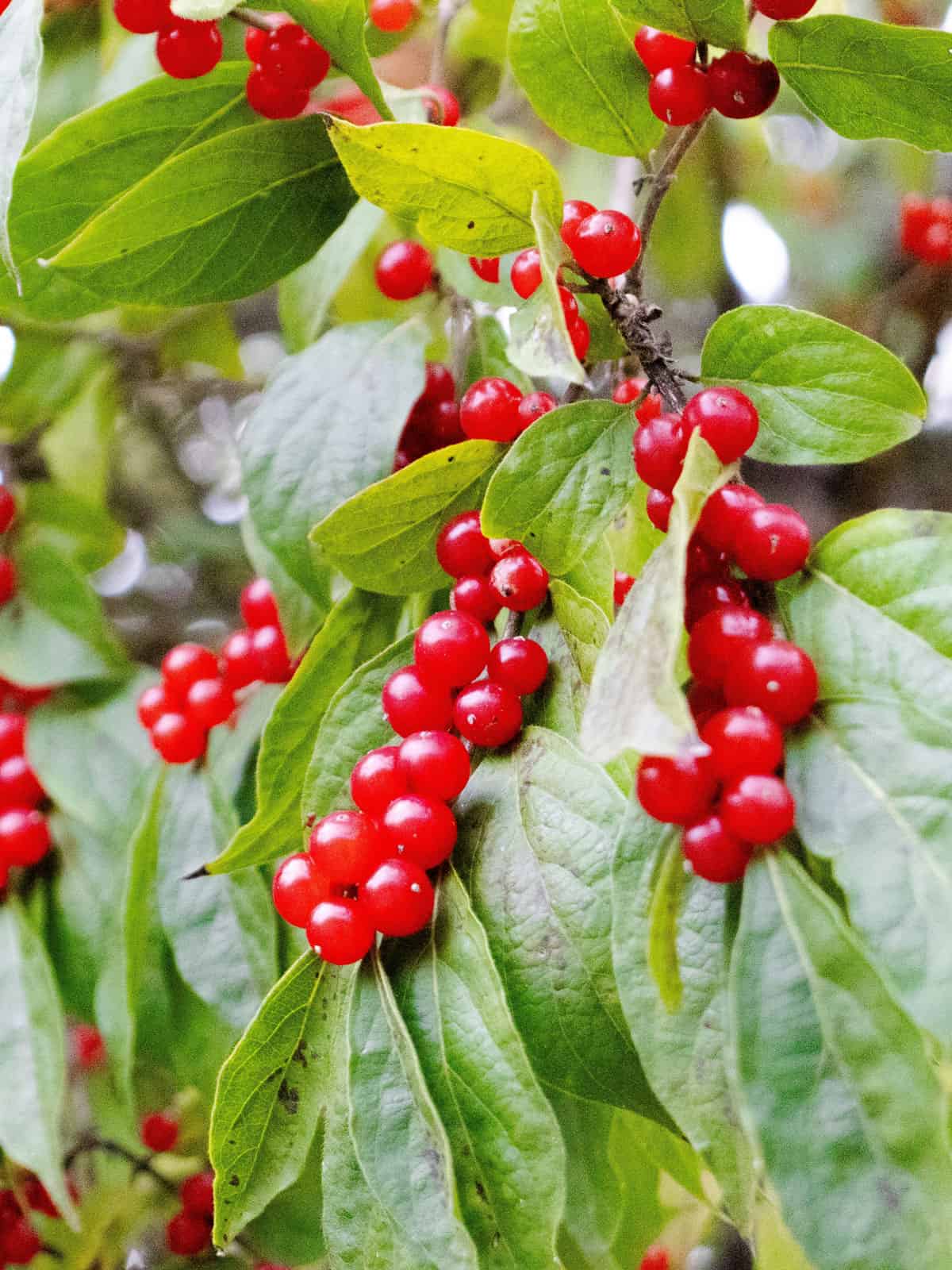
It has white flowers and popping red berries. You should combine it with the male winterberry holly to bear crops.
Unfortunately, only birds can eat its fruit, not humans. Keep it away from your pets to prevent a toxic reaction.
Nonetheless, the pairing is still helpful in giving an aesthetic view, especially during the fall when the green leaves drop. As a result, the shrub turns red.
- Height and Spread: 6 to 8 feet high and wide
- Foliage Cycle: deciduous
- Bearing Period: fall
- Soil Condition: wet; light or heavy type
- Spacing: 72 to 96 inches
- Light Exposure: full to partial sun
- Water Needs: moderate to high
- USDA Hardiness Zones: 3 to 9

Click here to see this packet of winterberry seeds on Amazon.
12. Xiahong plum (Prunus cerasifera Ehrhar f. atropurpurea)
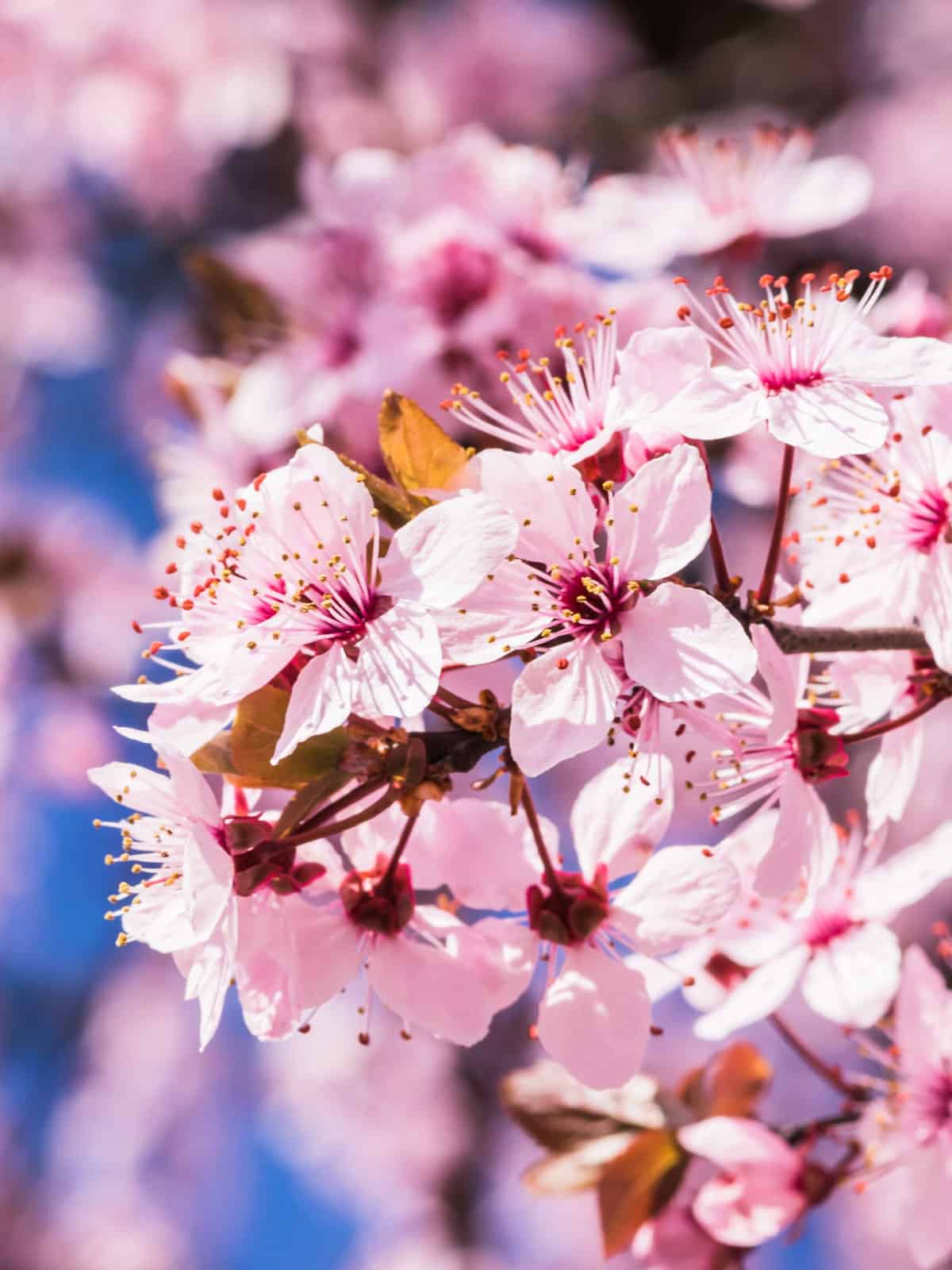
Unlike other forms, this deep red cultivar overcomes bud-break. An excellent way to form roots is through tissue culture.
- Height and Spread: 15 to 25 feet high and wide
- Foliage Cycle: deciduous
- Soil Condition: moist and fertilized; slightly acidic
- Spacing: 6 to 7 feet
- Light Exposure: full sun
- Water Needs: once a week
- USDA Hardiness Zones: 4 to 10
Which Trees Have Red Fruit?
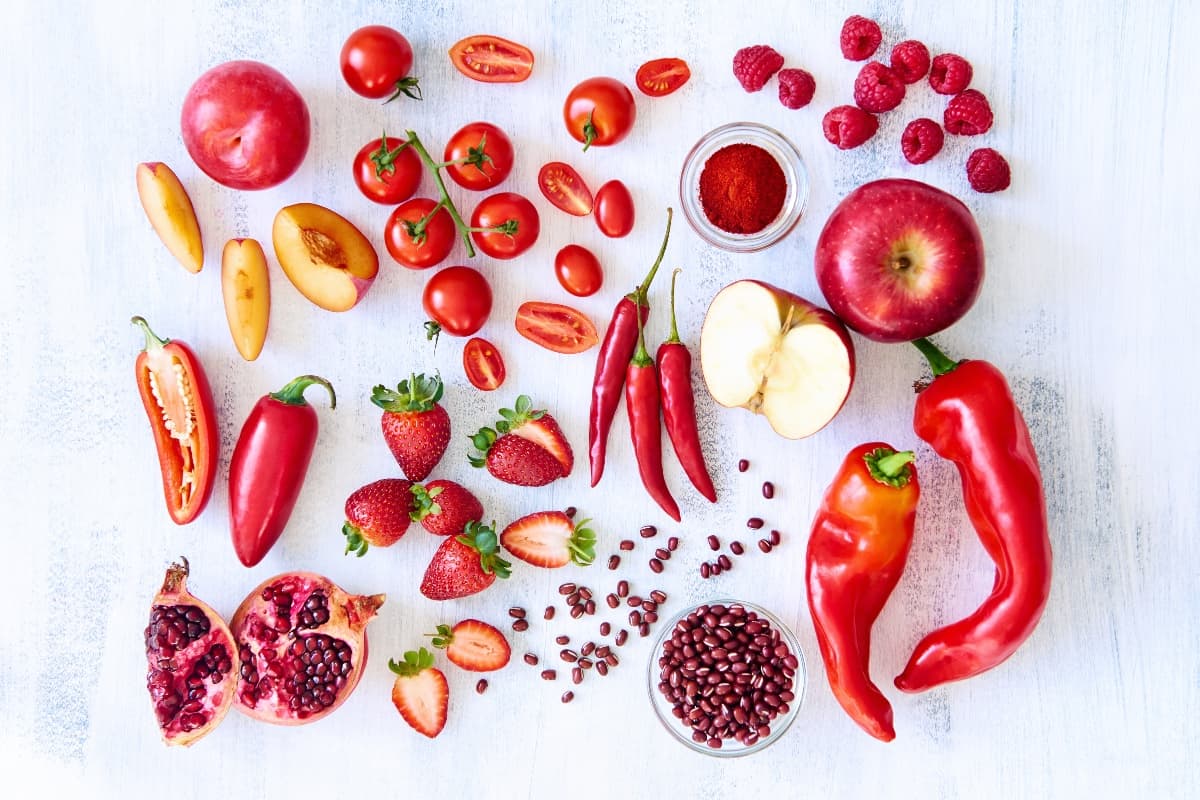
If you want red fruit instead of red leaves, choose from this selection of vibrant crops.
- Cherry trees
- Coralberries
- Currants
- Gooseberries
- Hawthorns
- Juneberries
- Lychee
- Mulberries
- Raspberries
- Strawberries
What Are Exotic Fruits?

Consider growing these unusual yet edible fruit trees that are gaining popularity these days.
- Aronia berries
- American persimmon
- Beach plums
- Bush sour cherries
- Cranberries
- Durian
- Goji berries
- Horned melon
- Japanese haskaps
- Kiwiberries
- Lingonberries
- Medlar
- Pawpaw
- Quince
- Rambutan
- Star fruit
Why Do Plant Leaves Turn Red?
The most abundant color of leaves is green, but other varieties are noticeable. Red leaves can reveal beauty or deficiency. It is normal when it goes with the season. However, it is problematic when poor care takes place.
- Lacks fertilizer or nutrient-rich soil
- Acquired fungal or bacterial diseases such as scorch and ring spots
- Has unsuitable pH level
- Contains low oxygen flow in the roots
- Experiences transplant shock
Remedies For Red Leaves
Despite these issues, you can still restore their original appearance. Here are some practical solutions you can try.
1. Apply nitrogen
Ammonium nitrogen is an important nutrient during the growth stage for most plants. According to the manufacturer's instructions, dilute one teaspoon of nitrogen powder in one gallon of water.

Click here to see this pouch of nitrogen-feeding supplements on Amazon.
2. Adjust The pH Level
Measure the soil condition using a pH meter. To enhance the acidity, add an ample amount of sulfur, coffee ground, or eggshell powder to your plant.
In contrast, mix the pulverized lime or wood ashes into the soil to increase the pH status, making the ground more neutral or alkaline.

Click here to see this digital soil pH meter on Amazon.
3. Improve Aeration and Water Drainage
Practice proper watering or build self-watering buckets. Avoid raising plants with an invasive root system and layering them with gravel.
Moreover, poke the topsoil with a chopstick to aerate the overly compacted soil, then water the tree. Do this with every other irrigation schedule. Then create holes at the bottom of the container if it is inside a pot.
What Kind Of Trees Have Red Leaves?
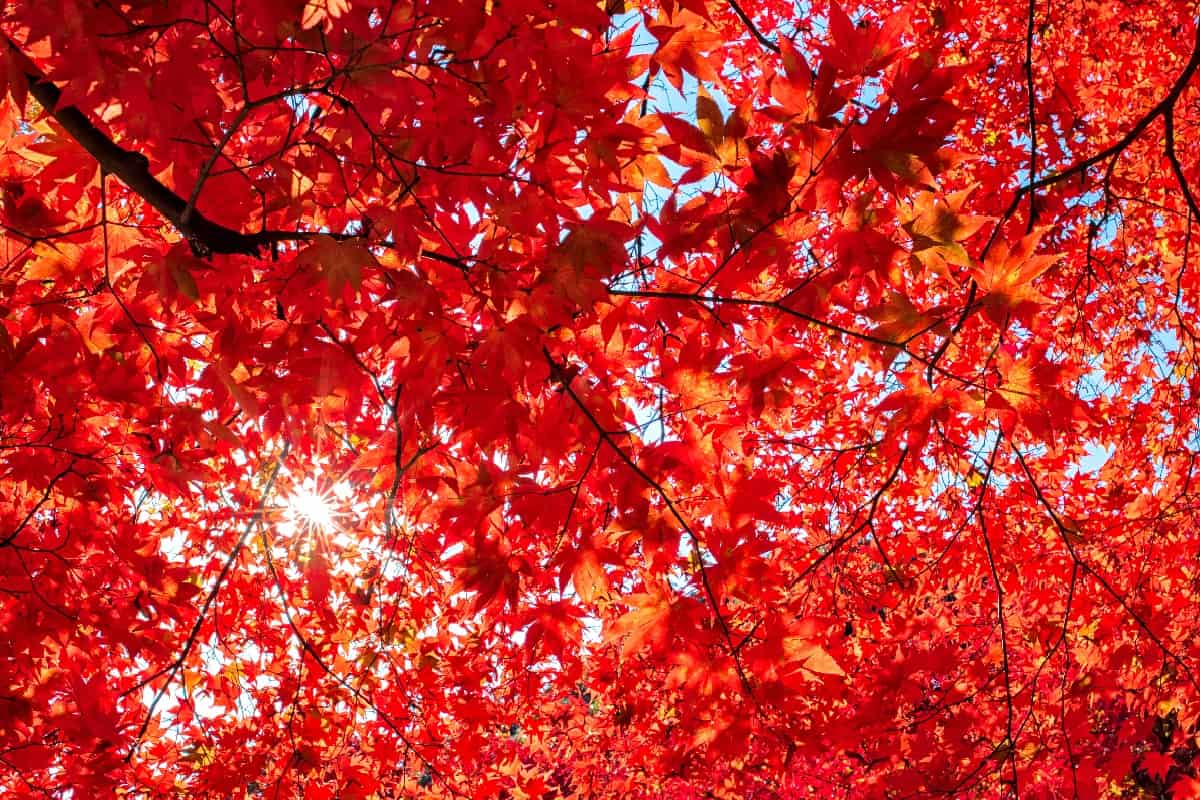
Chlorophyll brings the green pigment to the leaves, whereas anthocyanins cause the red color. They become abundant when cloud coverage or cold weather is consistent for a long period. The shift in appearance is a protective mechanism to thrive during those times.
Spring
Compared to fall, in springtime, some plants have patches of reddish brown and gray.
- American hop-hornbeam
- Flowering Dogwood
- Mindia ninebark
- Persian ironwood
- Sanguineum maple
Fall
These deciduous plants change the intensity of their leaves when temperatures decrease after summer.
- Black Tupelo
- Red Maple
- Rowan
- Shumard Oak
- Sourwood
Year-round
These species have red leaves throughout the year.
- Copper beech tree
- Cotinus smoke tree
- Crimson King maple
- Crimson Queen maple
- East Asian cherry
- Japanese maple
Final Thoughts
Fruit trees with red leaves and crops provide aesthetic appeal, regardless of variety and period. However, you should ensure that the changed appearance is not because of any deficiency.
Thanks for reading! If you enjoyed this post, explore these related articles on fruit-bearing greeneries:
10 Best Nut And Fruit Trees For Clay Soil
15 Fruit Trees With White Flowers
15 Fruit Trees You Can Grow In Pots at Home


